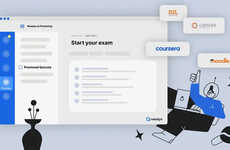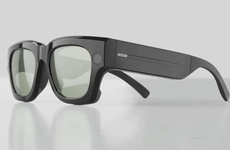
Wei Xiaoyong's 'Face Reader' Identifies If His Students are Bored
Professor Wei Xiaoyong, a science lecturer at Sichuan University in Chengdu, China, has developed a system that he calls the Face Reader for identifying whether his students are bored in class. The Face Reader uses facial recognition software to asses his students throughout the course of his lectures, and, after each lecture, Professor Wei can go back to the data to see which points in his lecture were most interesting and which points need to be spruced up.
The new boredom recognition technique uses existing algorithms and Wei's own research to assess the emotional qualities of faces. The Face Reader then tracks these qualities along a curve from happy to neutral, ultimately assessing whether they are bored throughout the class.
The new boredom recognition technique uses existing algorithms and Wei's own research to assess the emotional qualities of faces. The Face Reader then tracks these qualities along a curve from happy to neutral, ultimately assessing whether they are bored throughout the class.
Trend Themes
1. Boredom-recognizing Software - Disruptive innovation opportunity: Developing advanced facial recognition algorithms to assess emotional qualities and detect boredom in various industries such as education, customer service, and entertainment.
2. Emotion-tracking Technology - Disruptive innovation opportunity: Creating emotion-tracking systems utilizing facial recognition software in industries like market research, healthcare, and human resources to gauge customer satisfaction, patient well-being, and employee engagement.
3. Data-driven Lecture Enhancement - Disruptive innovation opportunity: Utilizing data analytics from facial recognition software in educational institutions, training programs, and public speaking to improve presentation quality, identify areas of improvement, and engage audiences more effectively.
Industry Implications
1. Education - Disruptive innovation opportunity: Integrating boredom-detection technology to optimize teaching methods, enhance student engagement, and improve learning outcomes.
2. Customer Service - Disruptive innovation opportunity: Implementing emotion-tracking systems to understand and improve customer experience, personalize interactions, and boost satisfaction levels.
3. Entertainment - Disruptive innovation opportunity: Incorporating boredom recognition software in entertainment experiences, such as movies, TV shows, and live performances, to tailor content, maintain audience engagement, and create more captivating experiences.
1.8
Score
Popularity
Activity
Freshness























